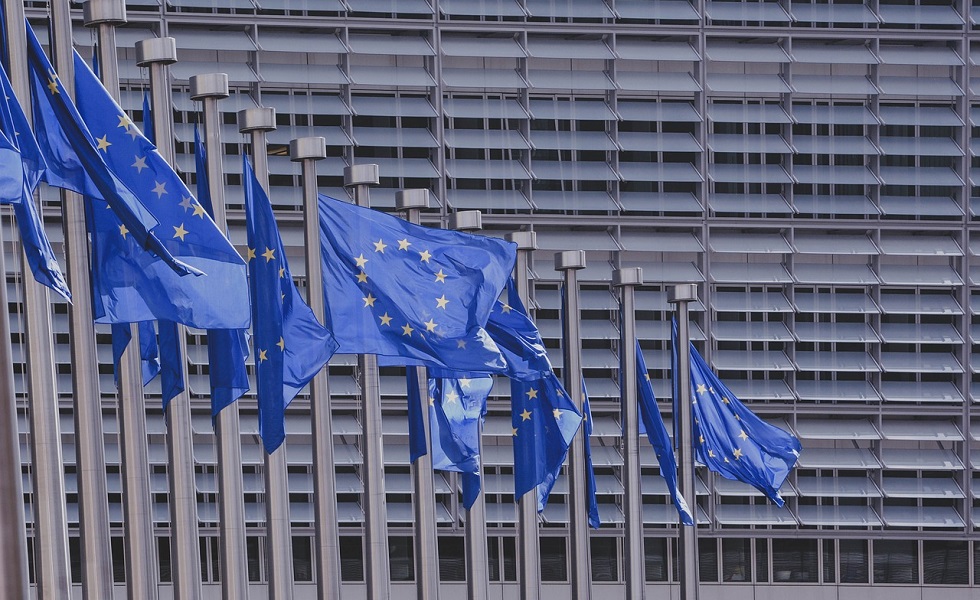DNB: Building a resilient and innovative economy
DNB: Building a resilient and innovative economy

‘If we manage to rise to the occasion, Europe could truly become an Innovation Union’, said Olaf Sleijpen at the Central Bank of Ireland Financial System Conference in Dublin today. In his keynote speech, he argued for deepening the Single Market, building a true Savings and Investment Union, and modernising the EU budget, in order to make the European economy more productive.
Sometimes, the trouble with an economy can be illustrated by an animal. Or rather, the absence of one. I mean, many countries have an animal as a national symbol. Ireland for example is often referred to as the Celtic tiger, symbolising its awakened economic power. The Dutch have the lion (no lack of self-confidence there). And the Americans the bald eagle. All impressive animals.
But what animal symbolises Europe? Some argue for the bull, and indeed I think it is displayed on all EU residence permits. But of course, there is a problem with that. Because as you know it refers to the story from Greek mythology, where the Phoenician princess Europa is abducted by Zeus, disguised as a bull. But in this story we are not the bull, we are the victim. And in a way that painfully illustrates how we Europeans sometimes fall into the role of a victim, when we could be taking matters into our own hands.
Now is the time to do exactly that: take matters in our own hands. And here perhaps we can take an example from Ireland. Two years ago, my predecessor was here in Dublin to give the Whitaker lecture. In his lecture he recalled how, back in 1958, Thomas Kenneth Whitaker initiated the Programme for Economic Expansion. This policy program opened up the Irish economy to foreign investment and industrial development. Ireland joined the EU, and ended its dependence on agriculture and tariffs. It was the start of a remarkable episode of economic development. The Celtic tiger had awakened.
Today, the European economy stands at a crossroads not unsimilar to the one your country faced almost 70 years ago. The European economy is not doing exactly badly, but we could and should do much better. Our productivity growth is too low. And that makes it particularly difficult to deal with the challenges of our time. As outlined in the Draghi report, the EU must unlock an estimated €800 billion in annual investments to meet its ambitions for climate, digitalisation, defence and innovation.
The root of the problem is threefold.
First of all, we still do not have one European economy. Substantial trade barriers between the EU member states persist. According to IMF research, productivity in the EU could increase substantially if trade barriers were to be reduced to the level observed among US states.
Second, our financial markets are highly fragmented and do not deliver sufficient risk capital for new innovative firms to grow. As we all know, European financial services are heavily bank-based. But banks are less well suited for financing innovation. In particular, there is a strong need for venture capital to enable innovative firms to grow beyond the initial start-up phase. As recently shown by the ECB, the availability of venture capital in the US is three times higher than in Europe, with the gap widening over time.
Third, the EU budget is still focused on the economy of the past, and not so much on providing the public goods that are necessary for the economy of the future. Agricultural subsidies and cohesion funds together account for more than two thirds of the EU budget, while expenditures on research, climate, defence and cross-border infrastructure remain low.
That is where we stand today. If we want a modern, innovative and productive European economy that is ready for tomorrow’s challenges, we need to change course. Like Ireland did in the 1960s.
Basically, we have to do three things.
First of all, we need to deepen the European Single Market, by addressing cross-border barriers, introducing more harmonised rules, and curbing national state aid policies that hinder innovation.
Addressing cross-border infrastructural barriers, both digital and physical, may require additional public investment, because this generally concerns public goods. Such investments may benefit from coordination at the EU level. I will come back to that in a minute.
To further harmonise rules, the EU needs to limit the possibility for ‘gold plating’ by Member States, by opting more for regulations rather than directives.
On state aid rules, there has been a progressive relaxation in response to recent crises. While national state aid was understandable and sometimes effective under the circumstances, it has also distorted the level playing field. Therefore, the European Commission should strictly enforce regulation of state aid at the national level. Instead, it should provide European state aid in a targeted way, and solely when it is clearly justified.
Capital markets are one area where deepening of the single market is particularly necessary. This is my second action point. Promoting the Savings and Investment Union is key here. We need to enlarge the pools of capital available for investment by stimulating households to invest more of their money rather than putting all of it in saving accounts. Pension reforms can also help here. Therefore I welcome the proposals by the European Commission, announced last week, to stimulate the build-up of supplementary pension provisions. And maybe Ireland and my own country can guide other partners in this respect. Furthermore, we need to make sure these pools of capital are invested more in equity, including venture capital, by taking down cross-border barriers. The SIU strategy recently presented by the European Commission is aimed at achieving precisely that.
Let me elaborate a bit on the issue of venture capital. Over the past years the EU has tried to stimulate venture capital. We can and should build further on that. We could streamline the registration process for the European venture capital label to encourage more funds to participate. We could expand the European Innovation Council’s equity co-financing model by introducing guarantees on investments. This could also be considered under other public programmes supporting venture capital investment, such as by the European Investment Fund, the European Investment Bank, as well as national initiatives. And we could reduce cross-border barriers in the field of tax procedures, insolvency proceedings and corporate governance. This could be combined with simplified reporting and compliance mechanisms.
I realise this is quite a list. Integrating our capital markets is a big task. But on the sunny side, the upward potential is also huge. If we manage to rise to the occasion, Europe could truly become an Innovation Union as well.
The third area where we can and must improve, is by spending taxpayers’ money through the EU budget more strategically. The next Multiannual Financial Framework, due in 2027, should be modernised, with a redirection of funds towards the provision of European public goods catering for Europe’s future. Those are goods and services that are more effectively provided by the government than the market, and that are more effectively provided at the EU level than at the national level.
There are several ways of doing this, for instance by redirecting current spending priorities. This is ultimately a political decision. Some argue in favour of the issuance of common EU debt to finance the EU’s new priorities. However, if we do that, this should be accompanied by a reduction in national debt levels to ensure that total public debt remains sustainable. Because ultimately, the national and European taxpayer is one and the same person. Moreover, while acknowledging the diversity of the public finances at national level in the EU, the average debt-to-GDP ratio in the euro area is high, and should be reduced. It is of utmost importance from a monetary and financial stability point of view that public finances in the euro area remain sustainable.
So to sum it up for you: deepening the Single Market, building a true Savings and Investment Union, and modernising the EU budget. That is the way forward.
I am wrapping up. Sometimes we Europeans are too pessimistic about our future. Instead of acting like a victim, we should take ownership and start building on our own strengths. We have tremendous potential. The EU is the world’s second largest economy. And in a world where everything seems uncertain and money seems to be able to buy anything, we have strong institutions governed by the rule of law. This is a strength not to be underestimated. We should build on this strength by making the European economy more integrated, more productive and more innovative.
This also calls for the selection of an animal to symbolise the European Union. And please, don’t let it be some non-existent animal designed by a committee. My proposal: an octopus. First, octopuses are among the most intelligent animals on earth. Moreover, they are remarkably resilient, as they are able to regenerate, which aligns with Europe’s repeated recoveries across history. Also, few animals are more adaptable. And finally, when it comes to creative intelligence and ingenuity, the octopus is nearly unmatched in the animal kingdom, reflecting the need for innovation. And if you are not convinced yet, watch the Oscar-winning documentary “My Octopus Teacher”.
Indeed, intelligent policies we need, like the ones initiated by Ireland in the 1960s. And as we are now talking about 27 countries instead of one, we also need a renewed sense of European purpose and unity. Being only a simple central banker, I am somewhat reluctant to quote famous writers beyond my level of understanding. But I could not help thinking of the famous line by Oscar Wilde: “Life imitates Art far more than Art imitates Life.” He wrote this to remind us that what we imagine together can become the world we wake up to. So let the art of our work, even that of central bankers, be something worth imitating. And the Europe we shape today will define the Europe we live in tomorrow.








